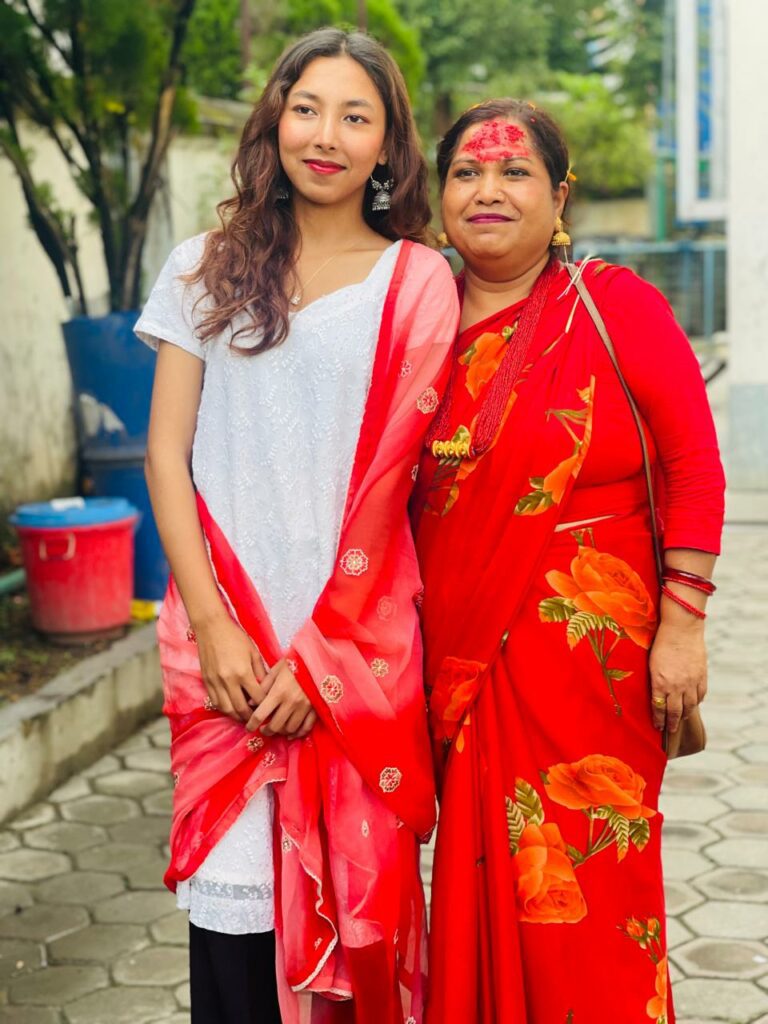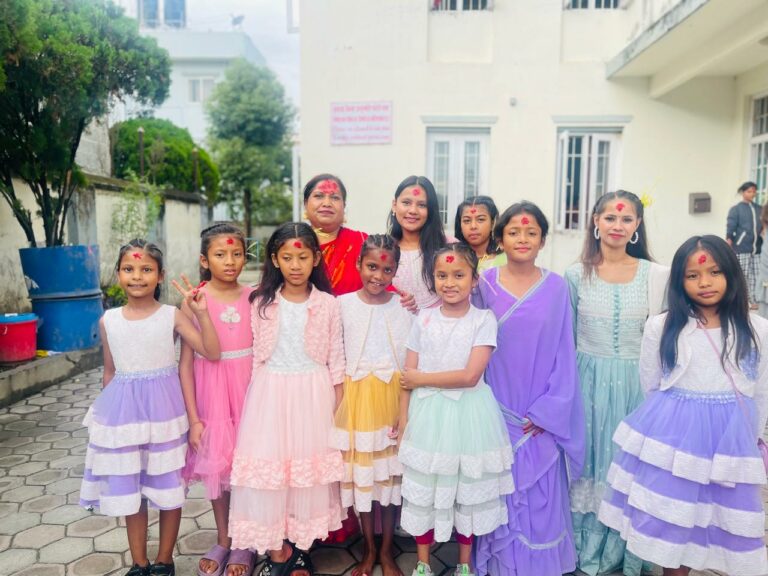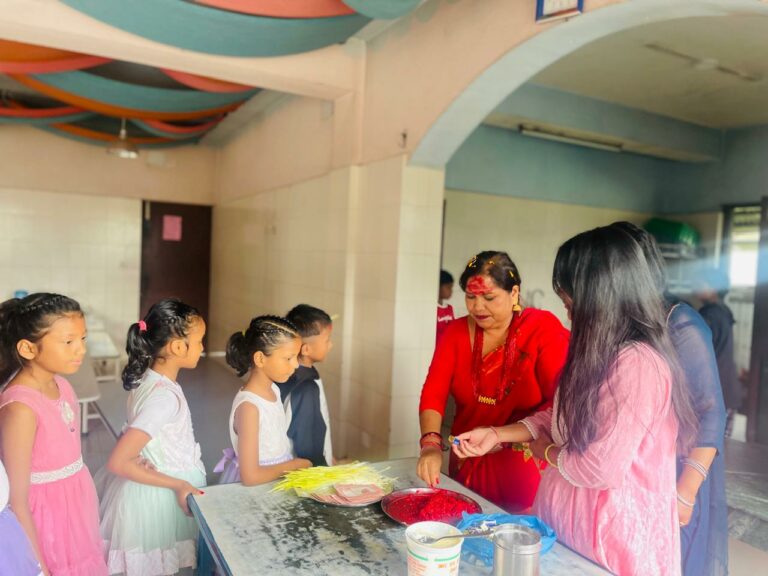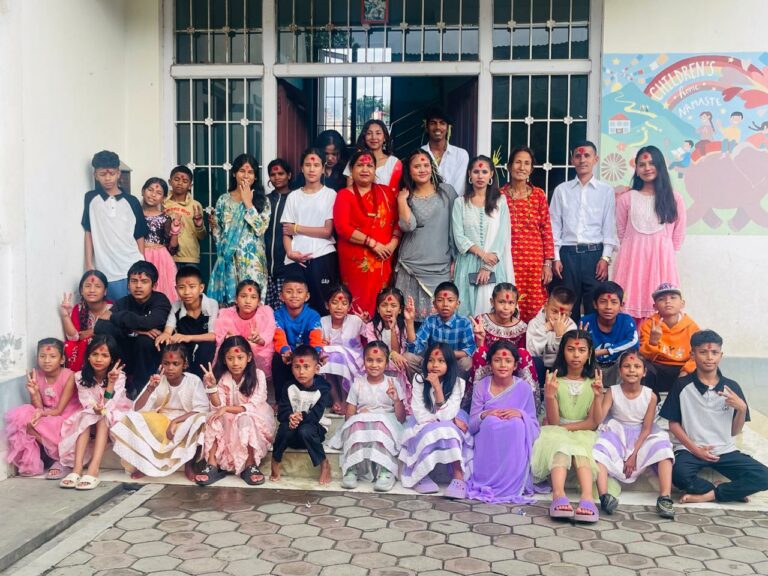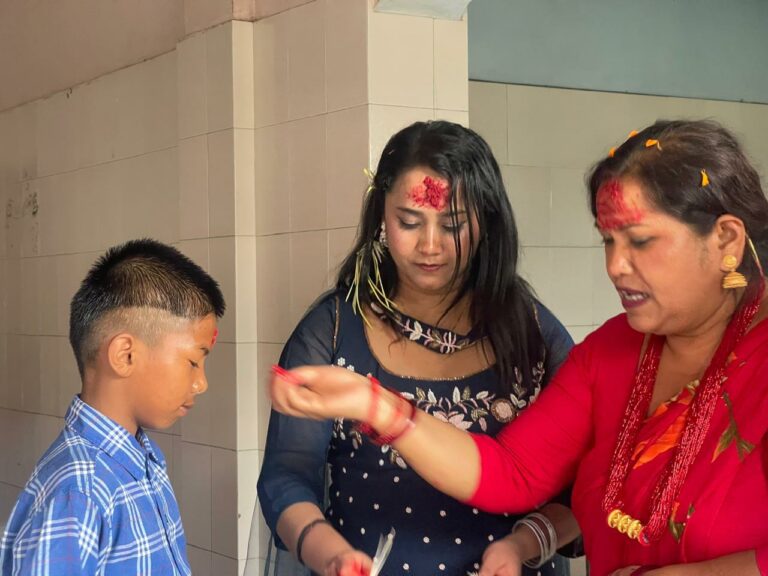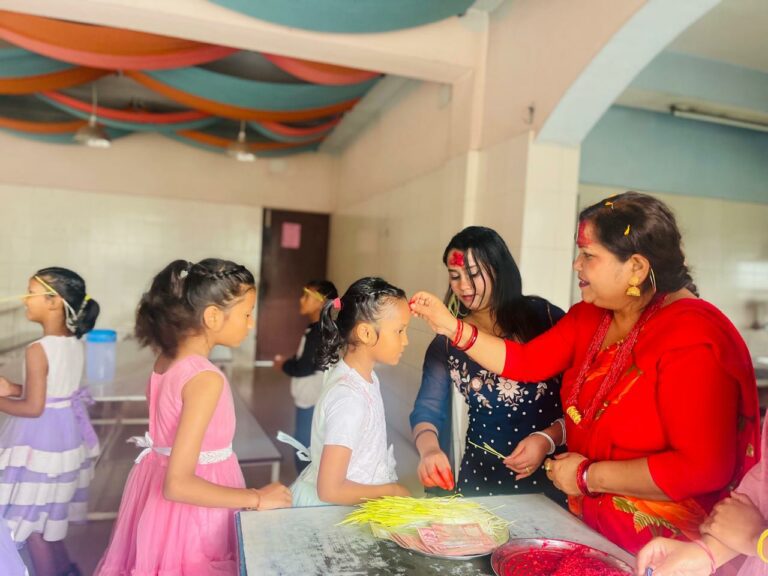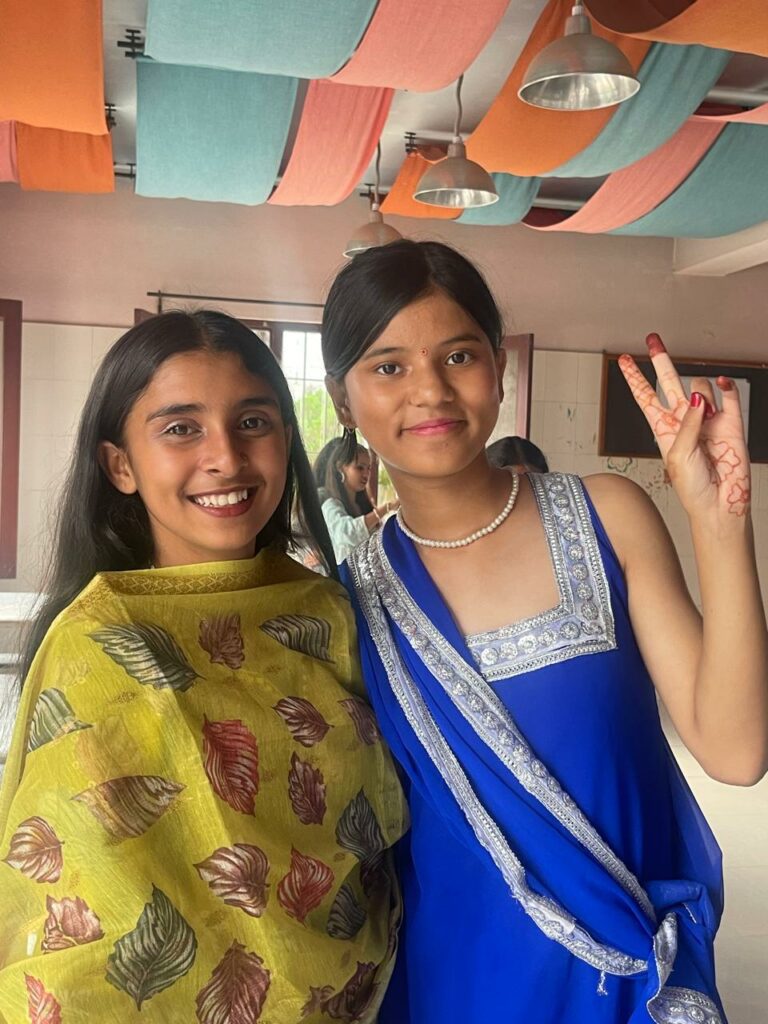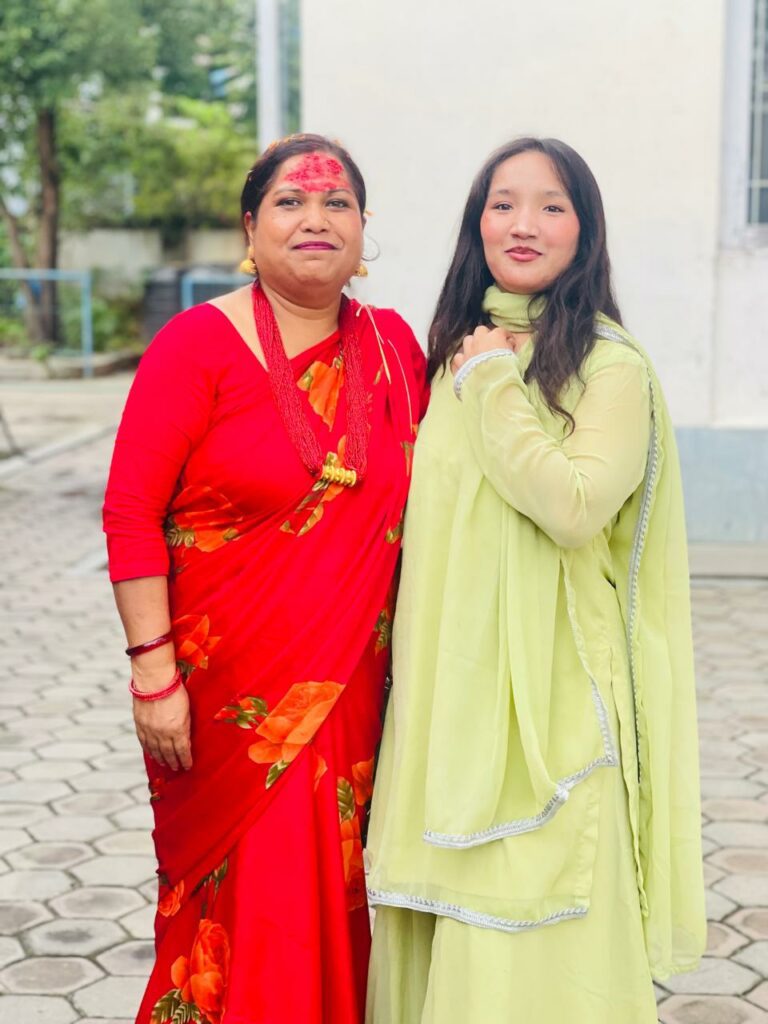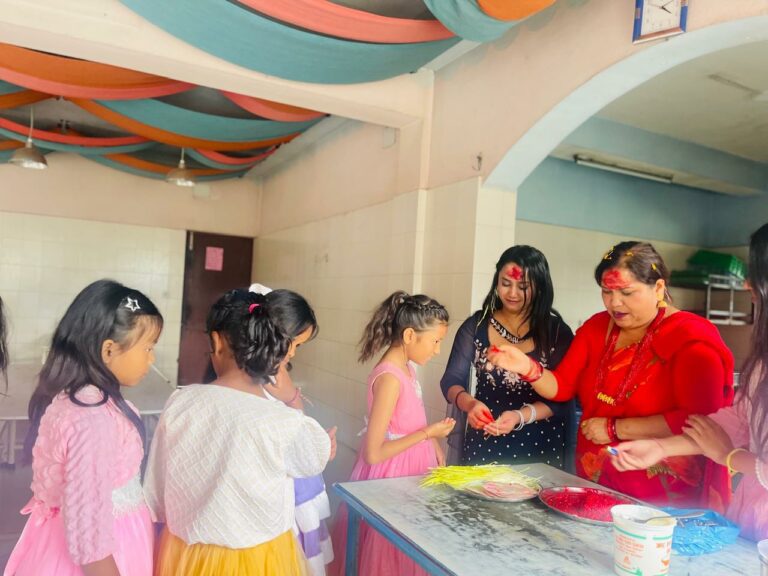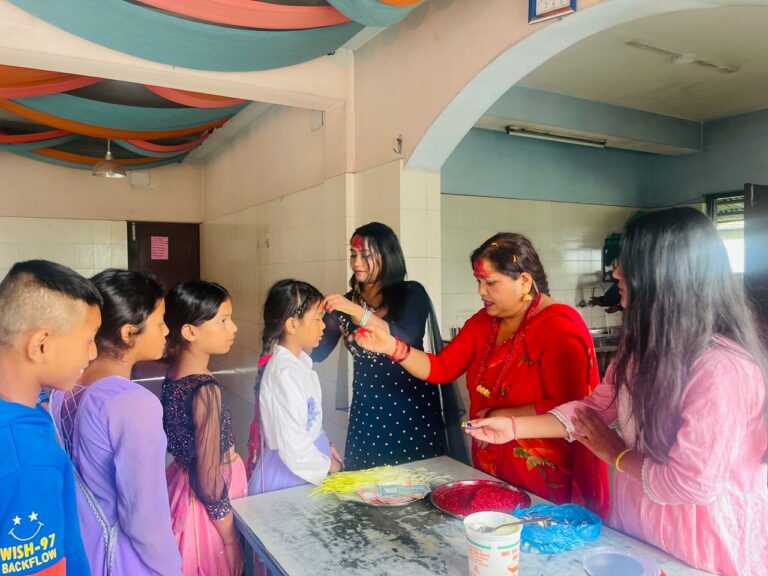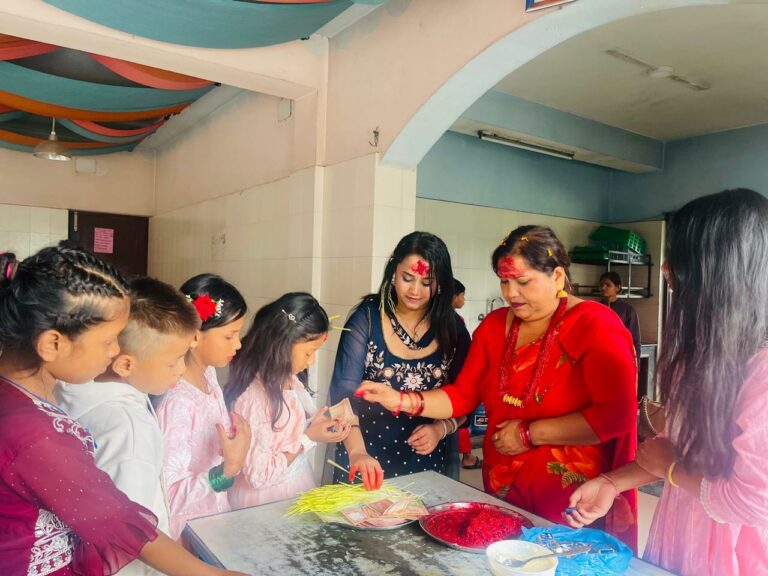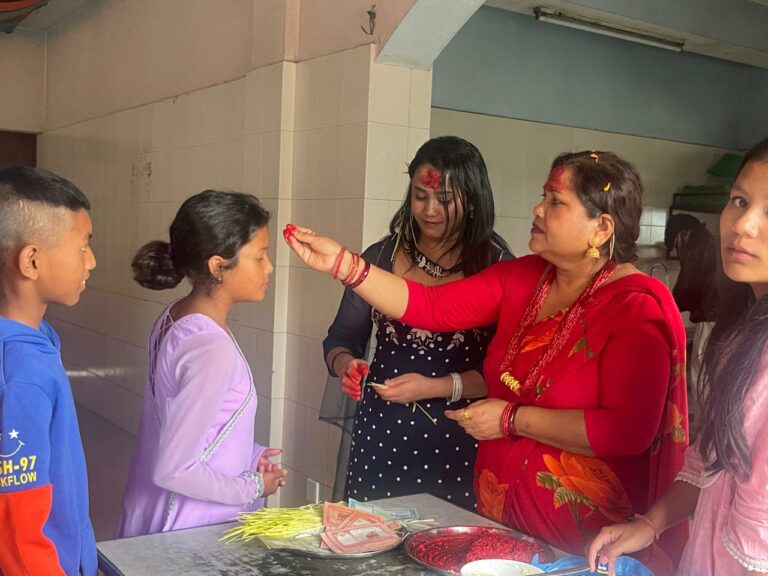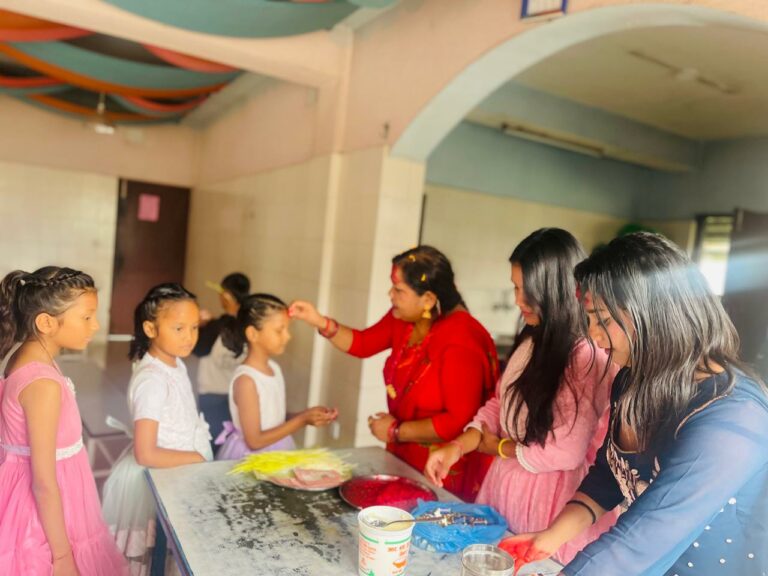Dashain, one of the most significant and widely celebrated festivals in Nepal, symbolizes the triumph of good over evil and is a time of family reunion, blessings, and joy. This grand festival, celebrated by Hindus across the country and beyond, holds deep cultural and religious importance. At its core, Dashain honours the victory of the goddess Durga over the demon Mahishasura, representing the ultimate win of virtue over vice.
In Nepalese households, Dashain is a time of festivity, marked by rituals, the exchange of blessings, family gatherings, and an abundance of delicious food. It usually spans 15 days, with each day having its own religious significance. People clean and decorate their homes, wear new clothes, fly kites, play traditional games, and receive tika (a mixture of rice, yogurt, and vermillion) and Jamara (barley grass) from elders as a symbol of blessings for health, happiness, and prosperity.
This year, Dashain was celebrated with immense enthusiasm at a Children’s Home, as seen in the photos. The atmosphere was filled with warmth, unity, and joy. For children who may not have the traditional family setting to celebrate with, the home provided a loving environment where cultural traditions were honoured, and everyone felt a part of something special.
The celebration began with days of preparation. The children and staff worked together to clean and decorate the premises. Colourful decorations were hung around the rooms and corridors, and a special space was arranged for tika ceremonies. The children, dressed in beautiful traditional and festive outfits, added a vibrant charm to the day. Girls wore bright dresses, and boys wore neatly dressed shirts, some even in traditional attire.
The spirit of Dashain was also reflected in the environment—walls were decorated with Dashain-themed posters, and the whole atmosphere exuded positivity and unity.
Tika and Jamara Ceremony
One of the most heartwarming moments of Dashain is the tika and Jamara ceremony, which is a symbolic act of receiving blessings from elders. At the children’s home, this ritual was carried out with love and devotion. In the photos, we see Mrs. Saru in a red traditional dress applying tika on the forehead of Children’s. The expressions on their faces show the emotional significance of this act. The tika, made of red vermillion mixed with yogurt and rice, is placed on the forehead, while Jamara is placed on the head as a blessing for a bright future.
In a traditional home setting, children receive tika from their parents and elder relatives. However, in the children’s home, the caregivers and senior members of the staff took on this role with immense care and warmth. Each child came forward one by one to receive tika and Jamara, accompanied by kind words, smiles, and sometimes small gifts or money, just like in a typical family celebration.
This ceremony highlighted the importance of love and belonging, regardless of blood ties. The staff’s dedication and the children’s joy illustrated that family is not always defined by birth, but by the bonds we share.
Games, Music, and Dance
No Dashain celebration is complete without music, dance, and games. After the tika ceremony, the children engaged in singing, dancing, and traditional games. Popular Nepali songs played in the background while children took turns dancing and showcasing their talents. The courtyard echoed with laughter and cheer.
Many children were seen enjoying snacks and sweets that are typical of Dashain celebrations. These small yet meaningful details contributed to creating a genuine festival atmosphere, one that helped the children feel included in the cultural fabric of their community.
The Message of Dashain in a Children’s Home
Dashain is not just about rituals; it’s about values victory of good over evil, unity, blessings, gratitude, and love. For children living in a home away from their biological families, these values become even more significant. Celebrations like these install a sense of cultural identity, emotional belonging, and spiritual strength.
The caregivers and staff played a crucial role in making this Dashain meaningful. They didn’t just organize a celebration they gave the children memories, warmth, and a reminder that they are loved and cherished.
The Dashain celebration at the Children’s Home was a beautiful reflection of Nepali culture, compassion, and the spirit of togetherness. Through the tika ceremony, music, dance, and shared meals, the children experienced the joy and blessings of the festival just like any other child in Nepal.
These celebrations are essential in building emotional bonds and creating lasting memories for the children. They also help in preserving traditions and ensuring that every child feels valued, respected, and part of a larger family. Dashain in a children’s home isn’t just about a festival it’s about creating a sense of home, hope, and happiness.
